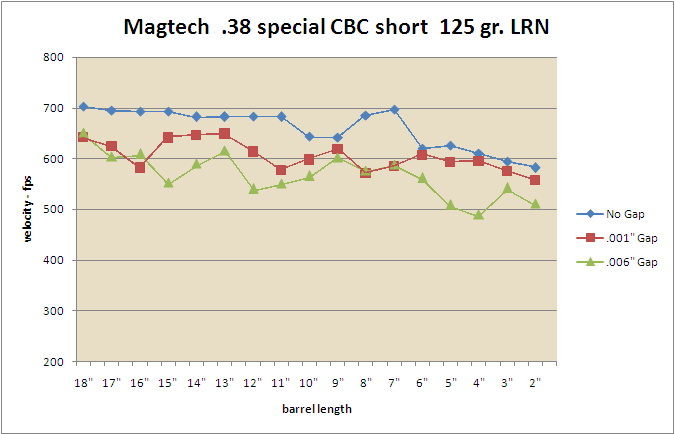I haven't been able to find anyplace which dealt with this question, so I hope someone on this forum might be able to answer my question.
Do revolvers lose velocity due to expanding gases escaping from the gap between the cylinder and the barrel?
Or another way of asking the question might be "Does a bullet of the same weight, and with the same powder and weight of powder, shot from a revolver and from a semiautomatic, achieve the same velocity?"
What got me to thinking about this was reading that the same cartridge shot from a 5" barrel would achieve a higher velocity than if it were shot from a 3" barrel. This was due to the increase amount of time the expanding gas had to expand and accelerate the bullet before the bullet left the muzzle and the gas began escaping around the bullet.
Thanks,
Do revolvers lose velocity due to expanding gases escaping from the gap between the cylinder and the barrel?
Or another way of asking the question might be "Does a bullet of the same weight, and with the same powder and weight of powder, shot from a revolver and from a semiautomatic, achieve the same velocity?"
What got me to thinking about this was reading that the same cartridge shot from a 5" barrel would achieve a higher velocity than if it were shot from a 3" barrel. This was due to the increase amount of time the expanding gas had to expand and accelerate the bullet before the bullet left the muzzle and the gas began escaping around the bullet.
Thanks,

